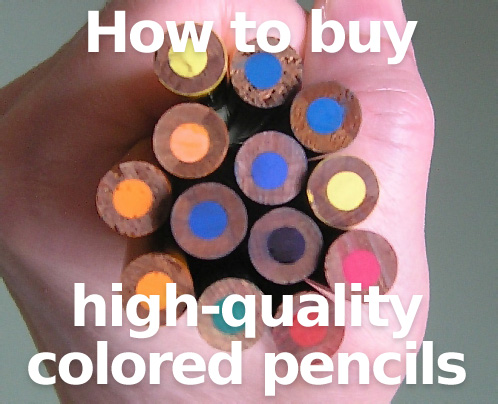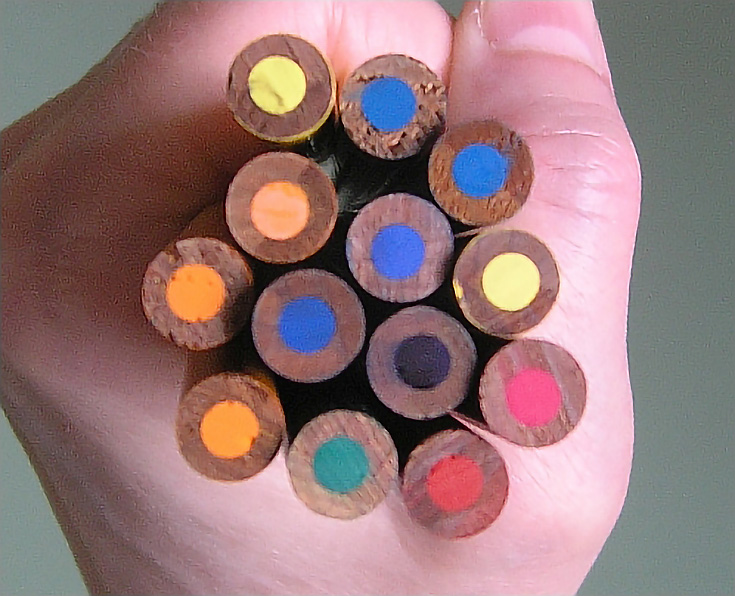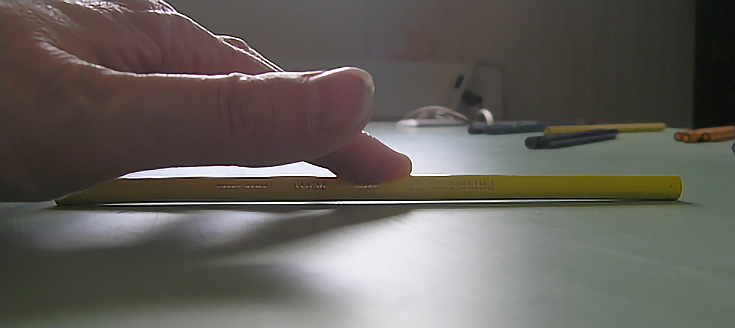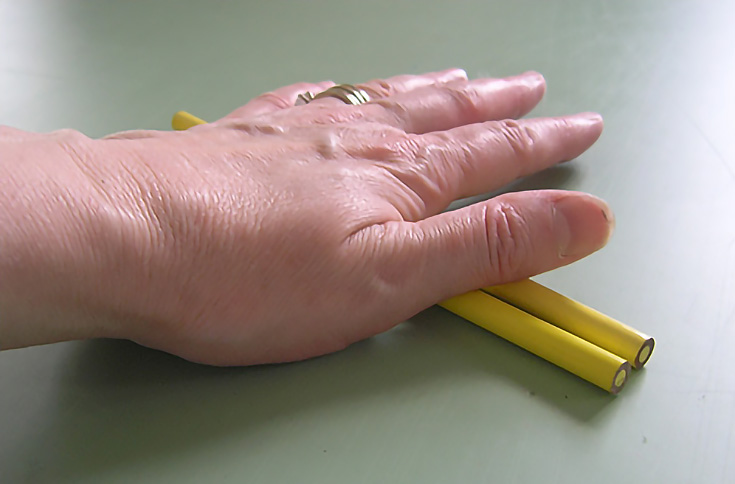Colored pencils are expensive. . . there’s no getting around it. And the higher quality pencils you buy, the more you’ll spend on them.
So it makes sense that if you’re dropping three dollars or more on each pencil, you want to get the most for your money!
I’ve already written about how to use every bit of your colored pencils (read that post if you haven’t yet!) but today I want to take look at the process from the other end—the purchase—and demonstrate how YOU can be sure you’re getting the best-quality pencil for your money.
Hold on—does quality really make a difference?
YES! Fine artists should always buy the best tools they can afford.
This applies just as much to colored pencils as it does to oil paint or any other medium. After all, not only do artist-grade colored pencils make it easier to do your work, they also reduce waste!
Artist-grade colored pencils have a higher ratio of pigment to filler, just like artist-grade oils or watercolors, because the binder is less expensive on the whole than the pigments. Cheaper pencils, therefore, are made with less pigment and more binder to save money.
You can see this most clearly in colored pencils made for kids. . . yes, they still color, but not well!
In the end, it will always take more pencils of a lower quality to do the same amount work and achieve the same results as if you were using top quality pencils—and because of that, it often takes a lot longer, too.
OK, without further ado, here are 4 things to always look for when buying colored pencils:
1. Is the pigment core centered in the pencil?
When selecting pencils, examine the ends. Is the pigment core centered in the wood casing? If it isn’t, the pencil may break more easily during sharpening. Broken pigment cores is a major waste of pigment and dollars, so be careful.
The cores don’t have to be perfectly centered, but the further off the mark they are, the more prone they will be to breakage. How much you’re willing to tolerate is up to you.
TIP: The best way to check this is to take a few pencils, hold them in a fist and look at the ends as a group. Finding centered pigment cores is easier this way, when you can see the differences from one pencil to the next.
You can see how some of the cores are dead-center, and some are not. The blue pencil at the very top is particularly bad. . . it’s quite a bit off center. This is not a pencil I would purchase as open stock. I’d go with the blue pencil next to it instead.
2. Do you see any damage to the wood casing?
The left-most orange pencil in the illustration above is also one I wouldn’t be likely to buy because of the condition of the wood casing. The chip on the upper left isn’t major right now, but could splinter during sharpening.
3. Are the colored pencils straight?
Make sure the pencils you’re buying are absolutely straight. To check, lay the pencil on a flat surface. (A back-lit surface can be helpful, as shown below, but it isn’t necessary).
Now take a good look at the pencil. Either the full length of the pencil is touching the flat surface or it isn’t. If it isn’t, put it back.
In my opinion, a pencil that isn’t flat is more of a waste of money than one with a slightly off-center core. They are almost always difficult to sharpen well and often result in broken cores.
If you’re not sure about a pencil, roll it along the flat surface. I like to roll pencils under my palm because the feeling in my palm is more sensitive than in my fingers and is more discerning than my eyesight. I can feel all but the slightest movement if a pencil has any warp at all.
You can also lay pencils side by side as shown here. Pencils that are not perfectly straight will become obvious. The top pencil is in good shape. The lower pencil is very slightly warped.
4. How vibrant is the pigment color?
Compare several pencils of the same color to make sure they are the color they claim to be. The last time I bought open stock, I found one pencil that looked like a particular blue from the outside, but when I compared the ends, the color of this particular pencil was clearly something else. It was still blue, but it wasn’t the right blue.
I’ve also found colored pencils that were mislabeled. Looking at the name on the barrel of a pencil isn’t always the best way to tell what color the pigment core is. Take a look at the core and you’ll know if it’s labeled correctly or not.
I believe every artist can benefit from these 4 tips, even if you don’t purchase really expensive colored pencils. So take the time to check—I guarantee you’ll get the most cost-effective and productive pencils every time.
This post may contain affiliate links.





